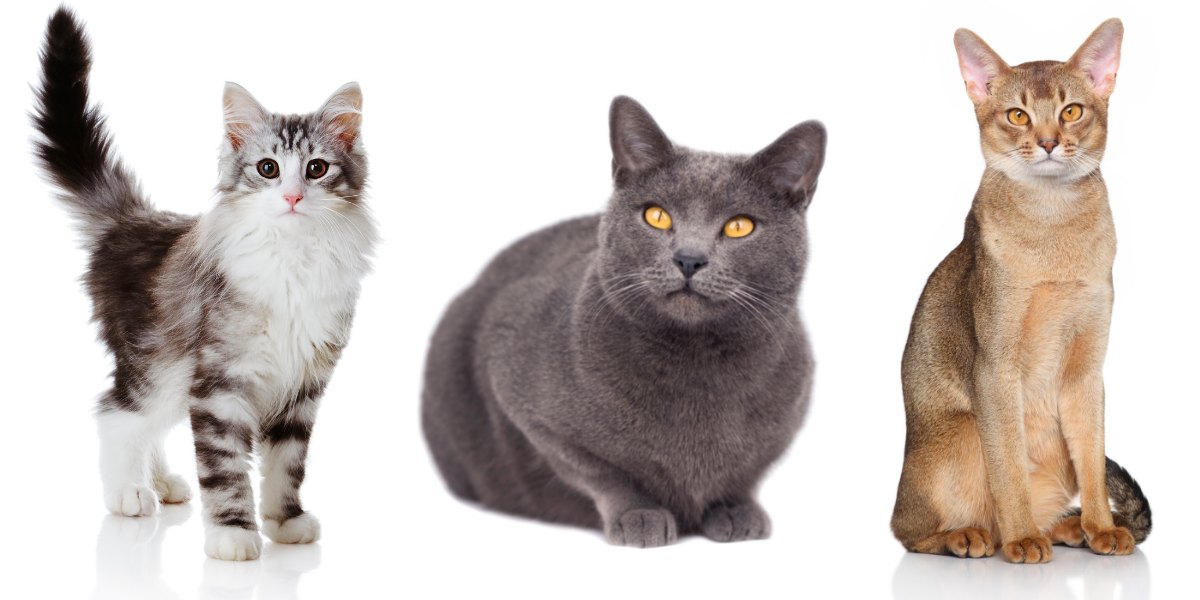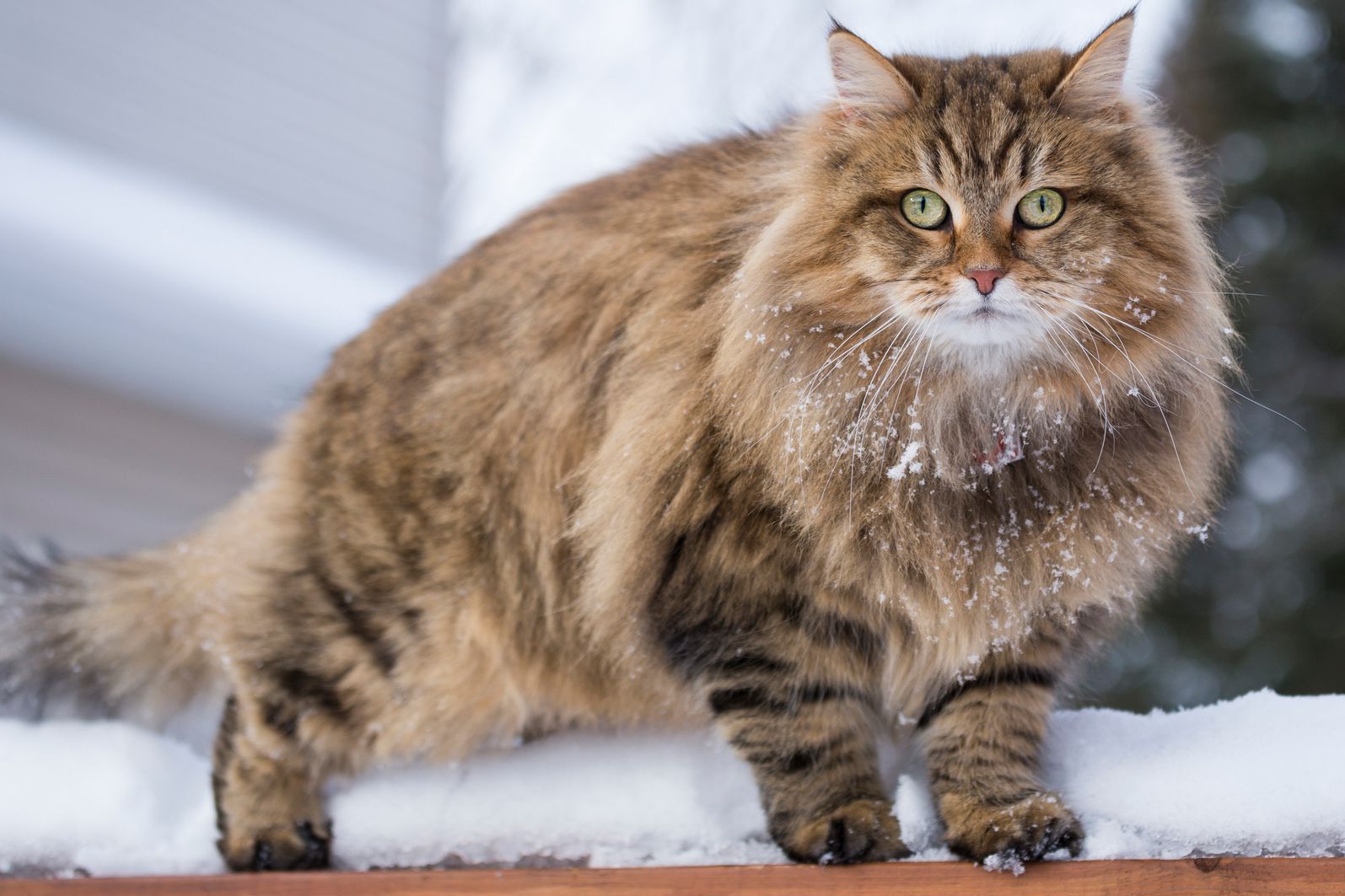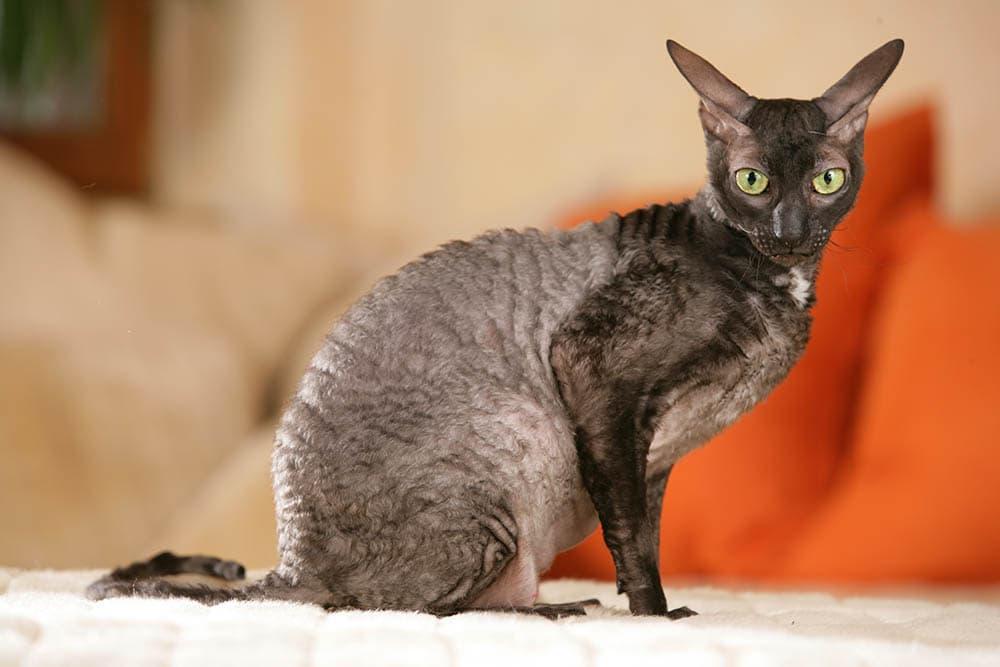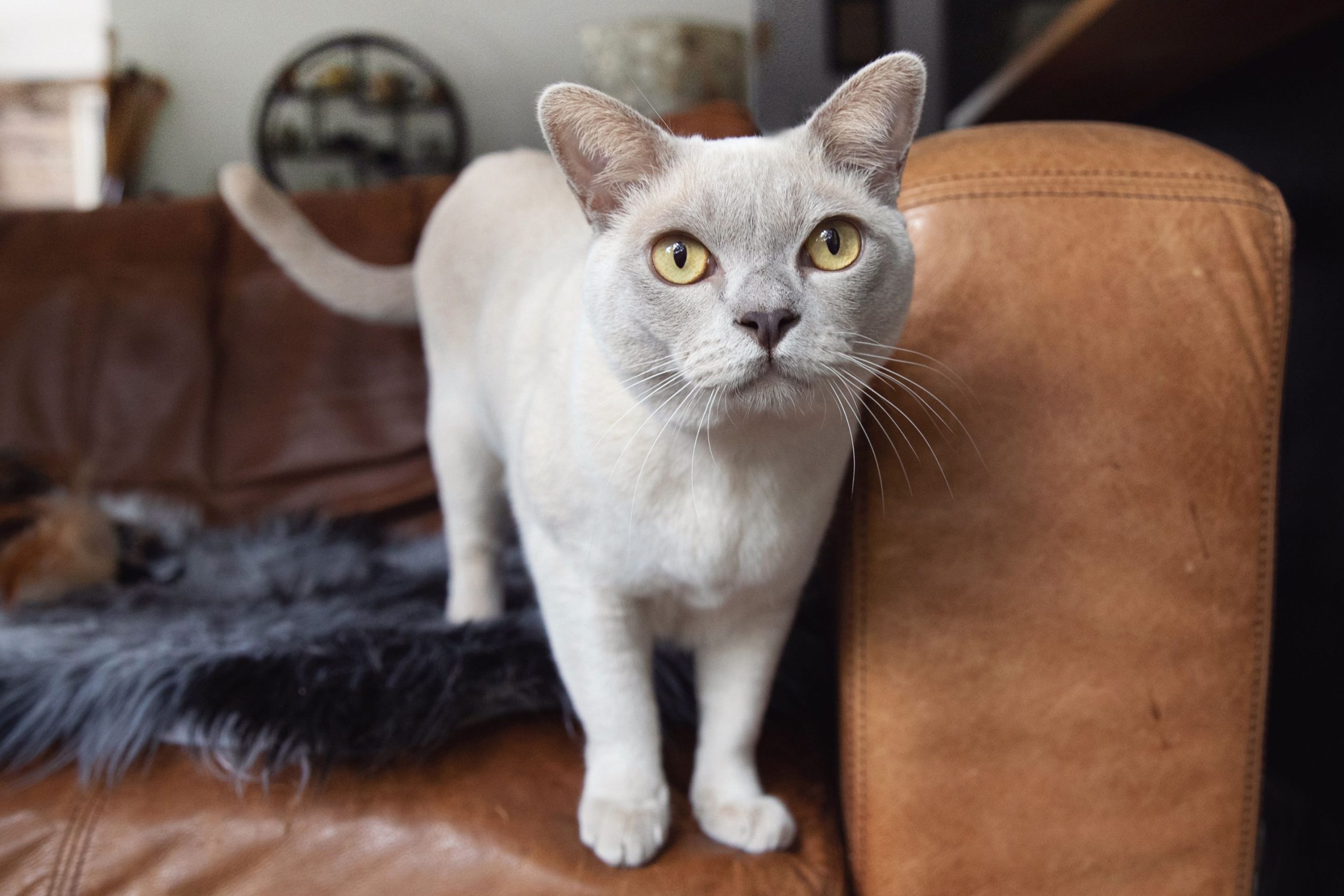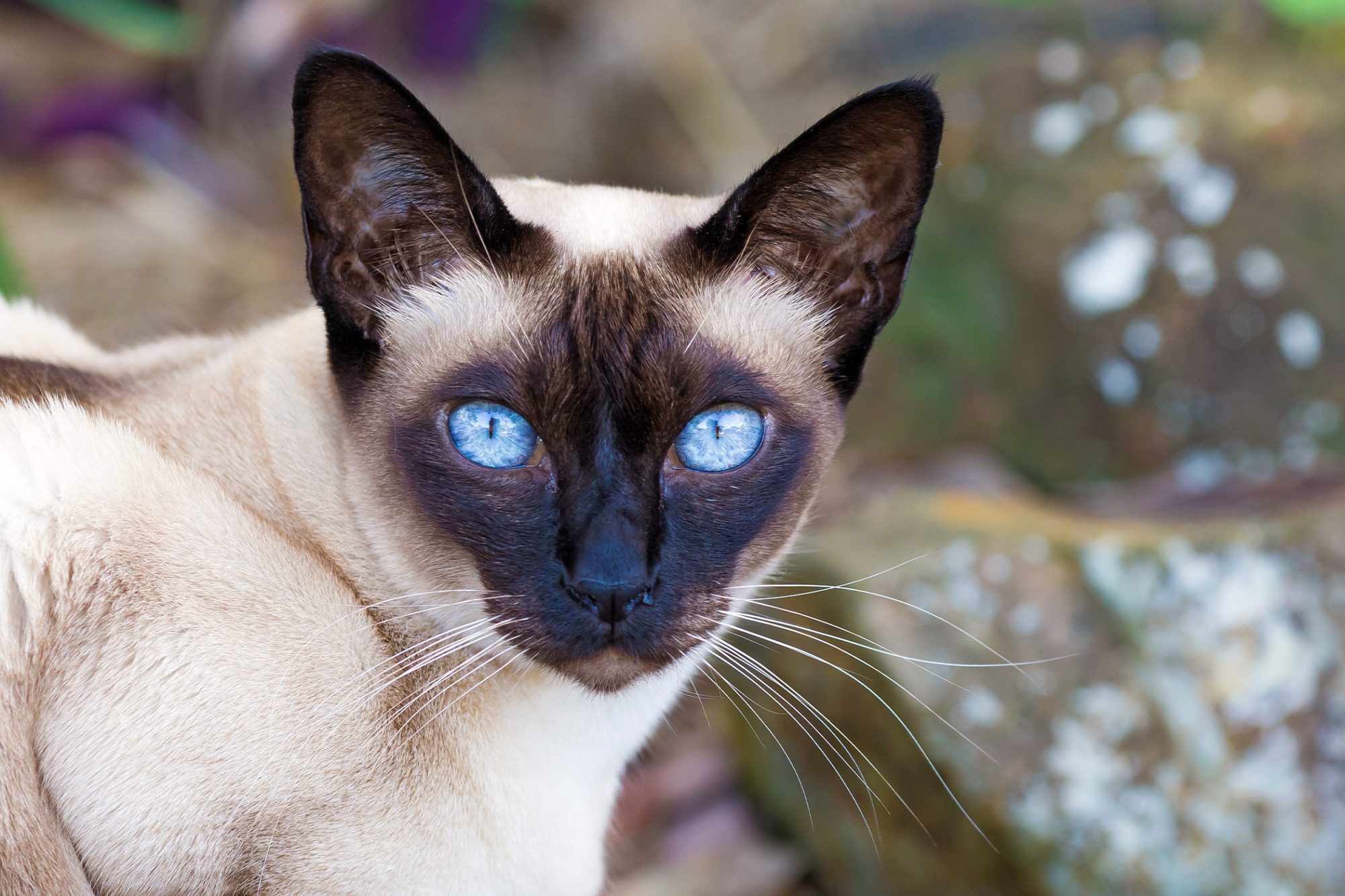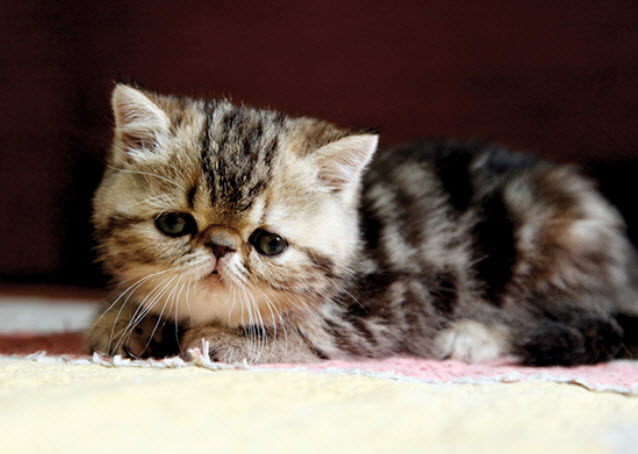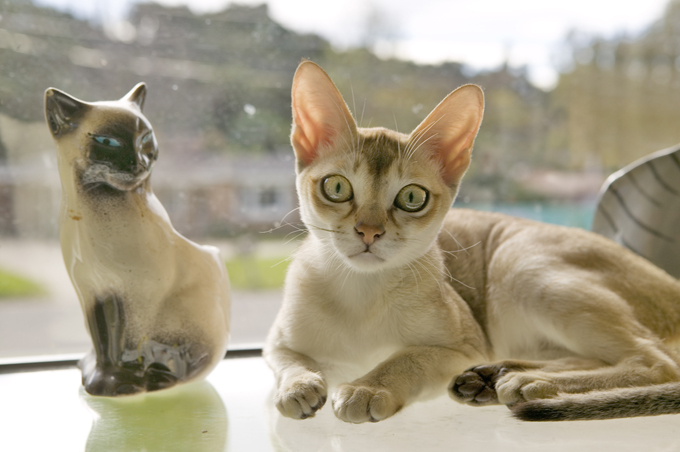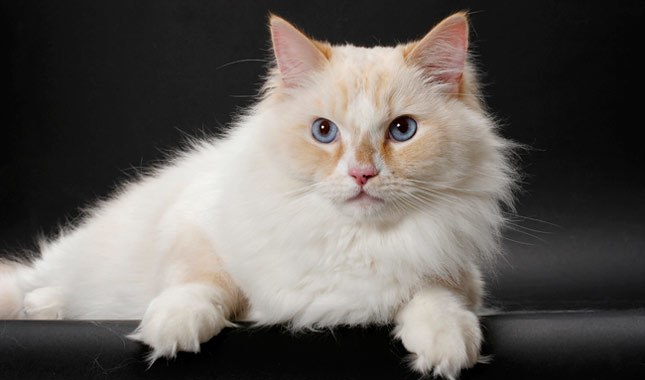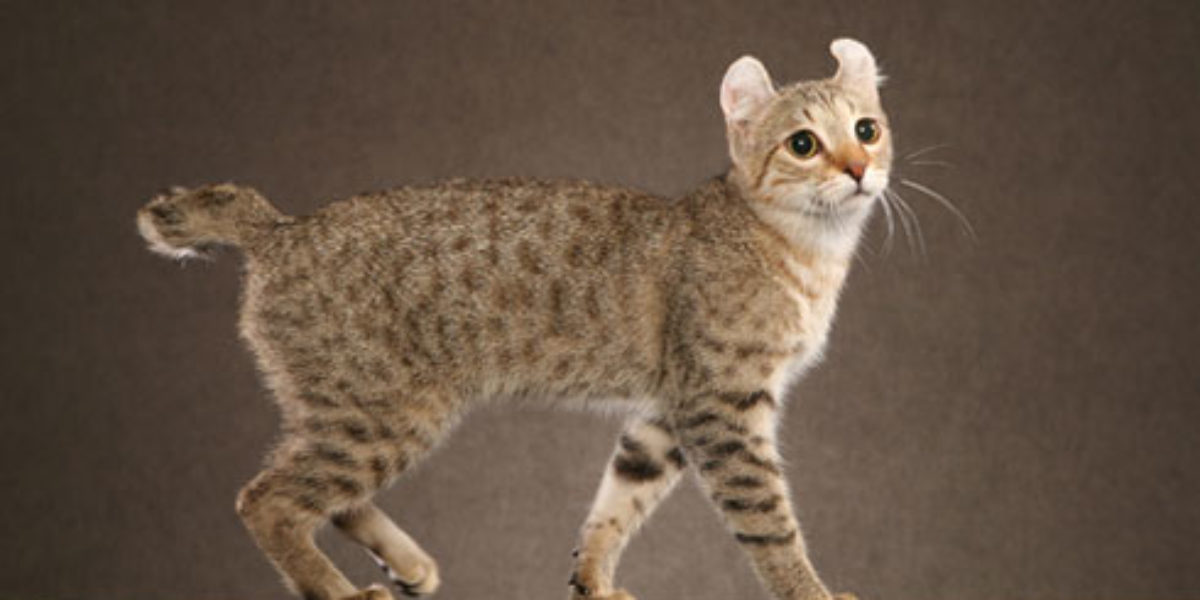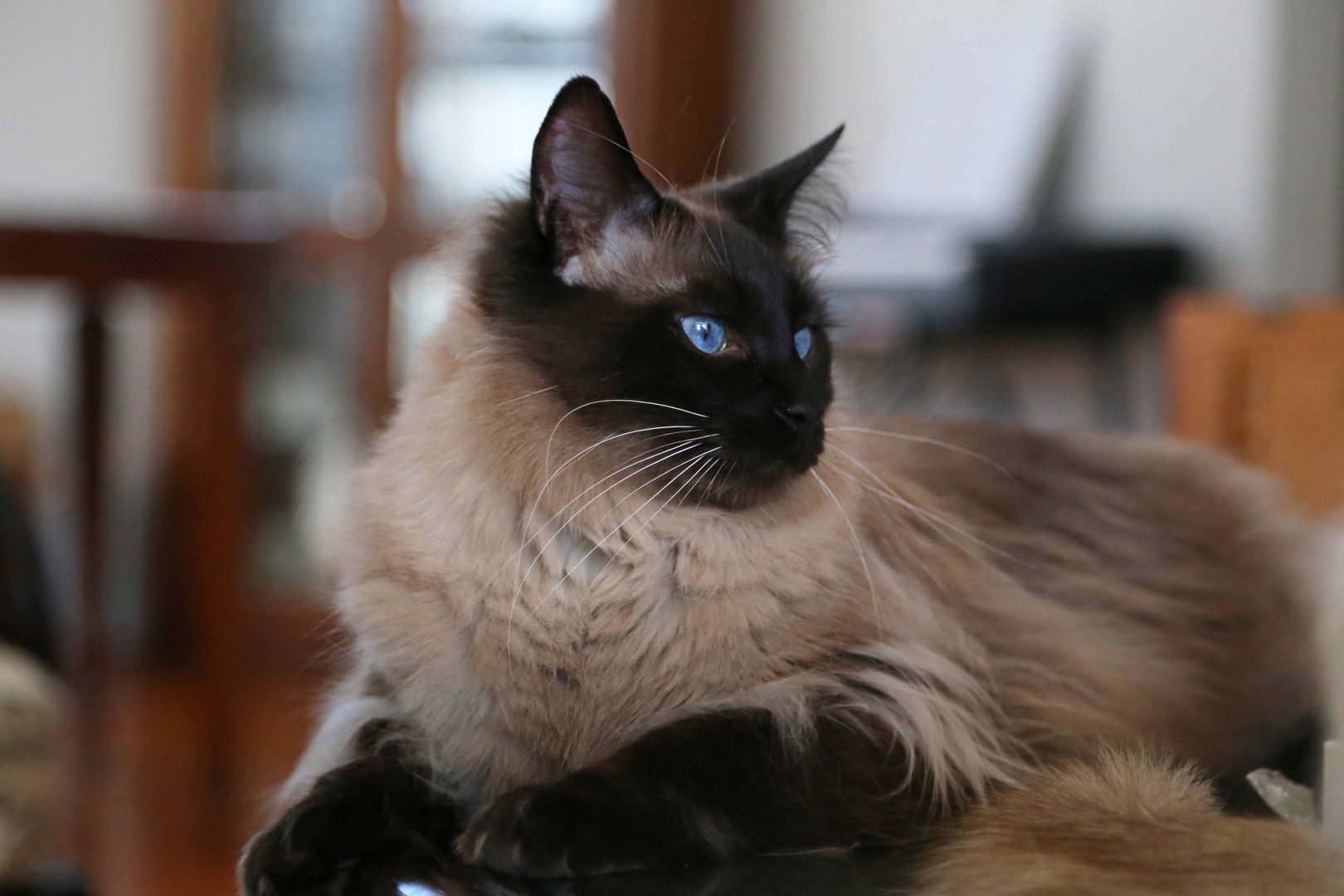Cats are the most popular pets in many families across the world. Some families keep even more than one cat at a time. They are a joy to have around because of their playful nature, ability to live cordially with humans and other pets, and immense intelligence, among other attributes.
There are over 100 types of cat breeds, classified as either purebred or domestic. Purebreds have a lineage that traces back their pedigree history, while domestic cats do not. Purebreds are also the only cat breeds recognized by major cat associations globally.
You are reading: 9 Types Of Cats – List of Cat Breeds
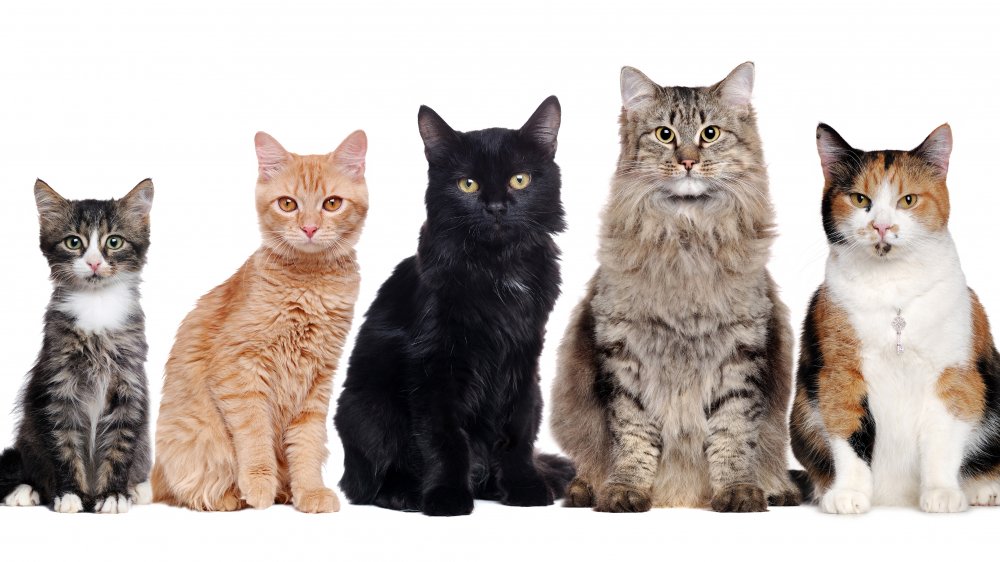
The prominent cat organizations are CFA-The Cat Fanciers Association, TICA-The International Cat Association, and FIFe-Federation Internationale Feline. The associations also take into account several factors before recognizing different types of cats as purebreds. Some of the most popular cat breeds go back to many centuries ago, with most of them garnering fame because of their unique traits, personalities, physical appearances, or featuring in famous movies.
However, even though cat organizations do not recognize domestics, they make close to 95% of the most preferred home kitties to keep in many American families. Domestics come as shorthaired or longhaired and in different colors and sizes.
Whatever the case, cats are small loving creatures that make home environments happy places. The reviews below are for some of the most common types of cats that many families prefer to keep as pets.
Types of Cats
1. American Shorthair
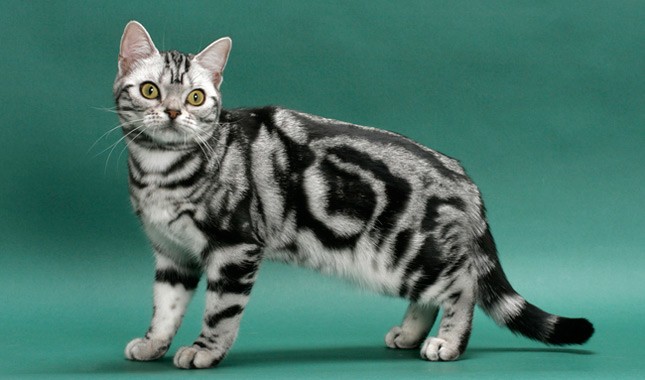
The American Shorthair is a popular breed in many American homes, and others worldwide. The breed traces its entry into America to the early 1600s through Spanish explorers and Jamestown settlers. The early intentions of breeding the cats were to protect crops from chipmunks and squirrels and as mousers. However, the breed started winning the hearts of many homeowners, and it was not long before many of them started to keep the breed as pets.
The Shorthair American breed is medium to large body, with a muscular build. It is not the usual lap cat type, and it is not too active. You can say that the cat is somewhat lazy. However, the cat is playful, has a sweet disposition, and its manners are docile and mild. It gets along with everyone, especially kids and other pets.
The breed’s short hair makes grooming easy as it does not shed much. Besides its affectionate nature, the American Shorthair is also independent and does not have any problems being alone. The breed reaches its maturity at three to four years and has a lifespan of 15 to 20 years.
It has diverse patterns and colors, but the silver tabby is the most common type. The breed enjoys good health, but the occasional hereditary hypertrophic cardiomyopathy becomes an issue with some of the cats. Other common health issues include mouth and gum diseases, respiratory and ocular problems, and obesity.
2. British Shorthair
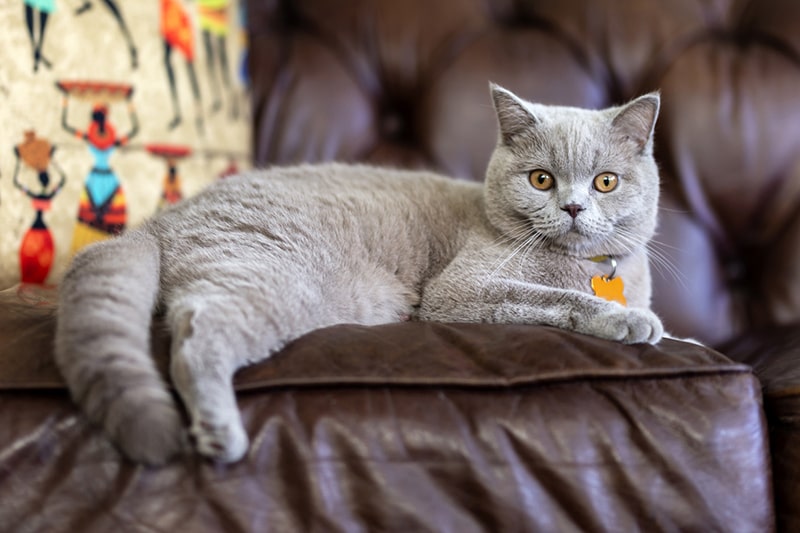
Another popular type of cat breed that you will find in many homes is the British Shorthair. The British Shorthair is one of the oldest cat breeds in the world. The belief is that the cats entered England in 43 AD after the invasion by Romans.
The popularity of the cats grew all over England during the Victorian era but under strict breeding conditions. In the 1900s, the British cross the shorthair with the Persian breed, giving rise to the British longhair. The two are similar save for the length of their fur.
The America Cat Association recognized the breed in 1967, making it one of the top breeds accepted and recognized by all cat associations. The cat has a round body with strong legs and a broad chest. Its coat is plush, short, and thick, and it sheds its fur during the fall and spring. A weekly brushing of the coat is enough to keep the breed tidy and without any loose hairs.
The cat is not needy, and it will be okay by just lying next to your feet instead of going for your laps. Even though the breed is not a lap cat, it likes to follow people close to it from one place to the next. They are gentle, especially with kids and other pets, and they respect everyone around them.
The breed has a lifespan of between 12 and 17 years, and they come in a variety of patterns and colors, with the most common being gray. The breed enjoys good health, but it is susceptible to specific health issues, such as obesity, gingivitis, hemophilia B, and hypertrophic cardiomyopathy. The breed’s popularity has seen the cays appear in several TV movies and books, with the most popular being Alice in Wonderland and Cheshire Cat.
3. Abyssinian Cats
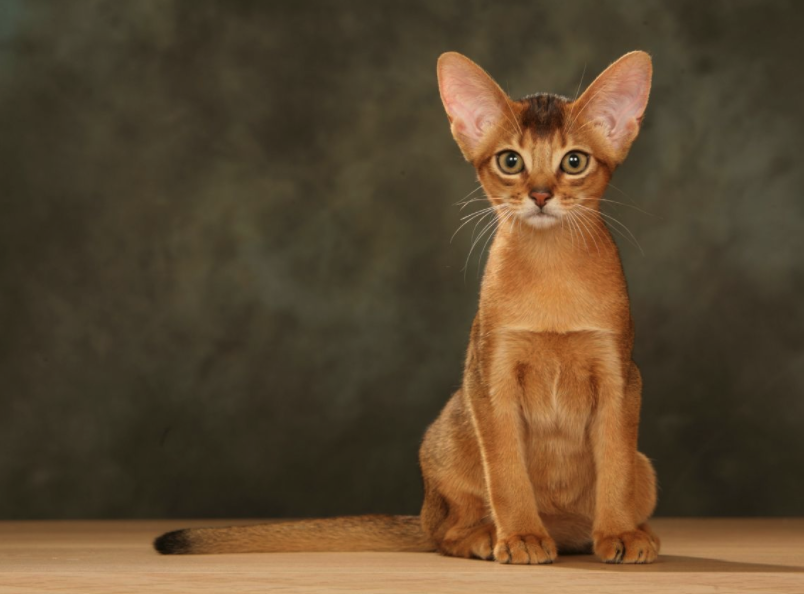
Another popular type of cat breed in many homes is the Abyssinian that also goes by Abys or Bunny Cat. Even though the breed’s history is obscure, there is the belief that the origin we Ethiopia, formerly Abyssinia. Stories about the breed’s history go further to say that it found its way to the UK through army personnel in 1860.
The first thing that captures your heart about the Abyssinian cat is its elegance. It has a medium-sized build with long slender legs and a strong, lithe body. The head of an Abys has a wedge shape, and the ears have tufts on the tips. The cat has a distinctive pattern on its fur, with the ruddy color being the most common among other shades and patterns.
The Abys looks very much like an African wildcat. It is an intelligent, playful, curious, and quiet pet with great attachment to humans and enjoys the company of those around it, activity, and space. It enjoys climbing and feels more at ease around high places and trees.
Read more : Exotic Cat Breed Information, Pictures, Characteristics, Facts and Names
The coat is easy to groom, and an occasional brushing relaxes the cat. The Abyssinian cat’s most common health issues include anemia caused by pyruvate kinase deficiency, and progressive retinal atrophy, an eye problem.
4. Maine Coon Cats

The Maine Coon is another popular type of cat in many homes in America. The adorable breed is also one of the largest cat breeds in the world. The breed first came to America as a longhaired cat in the 1850s through seafarers. It mated with shorthair breeds to produce the strongly built cats with raccoon-like tails, semi-long coats, and brush-like tails. The cat got its name from the looks. One of the characteristics that made the cat stand out was the dense coat that withstood the Maine winters with ease.
In the 1860s, the cats had special shows held for them, and before long, they became some of the most favorite pets. Besides the muscular body, Maine Coon cats also have heads with squared-off muzzles, substantial legs, broad and extensive ears, a waterproof topcoat, and a glossy undercoat. It has long hair on its tail, sides, and back, but shorter on the shoulders, neck, and head.
The belly and breeches have shaggy, fuller hair. Other notable features that make the breed stand out include tufted tip ears, long and flowing tail hair, and a ruff that starts from the base of the ears. The Maine Coon comes in different colors with copper, green, or gold eyes.
The cat is friendly, playful and it has a sweet nature. It is brilliant, energetic, enjoys human company. On many occasions, it exhibits dog-like habits where it follows the owner from one room to the next, plays fetch, and obeys the basic commands such as come, sit, etc. Even though the breed enjoys excellent health, it is prone to hip dysplasia and hypertrophic cardiomyopathy issues.
The cat breed needs frequent grooming to keep its long hair in good and healthy condition, irrespective of whether the breed does a perfect job cleaning itself. The lifespan of the Maine Coon is 12 to 15 years.
5. Ragdoll Cats

When people talk about types of cats with large muscular bodies, another one that comes to mind is the Ragdoll cat breed. Besides its large body, the Ragdoll is a laid-back cat and a wonderful pet. The earliest Ragdoll kittens were a cross of a White Persian Queen and Birman Tom in the 1960s in California.
It gets its name from how floppy and relaxed it becomes when picked up. Besides the imposing and powerful body, other features that make the breed easily recognizable are the distinctive body markings with three coat patterns in four different colors. It has large deep blue eyes, a broad head with a flat top, broad chest, sturdy legs, and a short neck. The tail is bushy and long, while the coat is dense, silky, with alight ranging from medium to long.
Of all the domestic types of cats in homes, the Ragdoll is probably the most laid-back breed. It is undemanding, gentle, good with kids and other pets, devoted, trusting, loyal, content, and it tolerates most of the situations thrown at it with ease. The cat has a striking coat, and to keep it in good condition, you need to groom it regularly.
The most pronounced genetic health issue associated with the Ragdoll cat is inherited hypertrophic cardiomyopathy. A female Ragdoll weighs between 10 and 15 pounds, while the male weighs an average of 20 pounds and above. The cat breed has a lifespan of 12 to 17 years.
6. Persian Cat
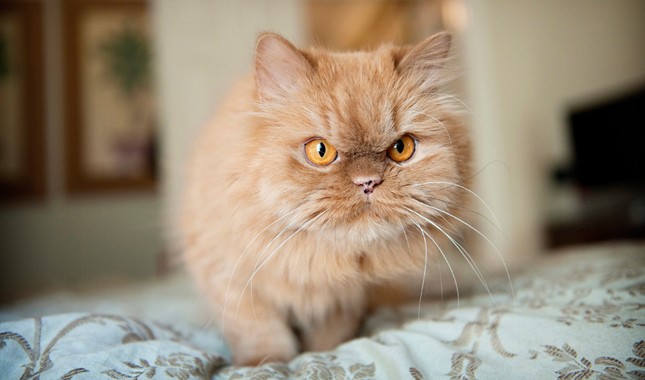
If you are looking for luxury in a cat, you cannot do better than the Persian cat. The breed is pure elegance, and it boasts the softest and longest fur you can think of. Besides its beauty and grace, the Persian cat is a laid-back medium to large pet and one of the most popular cat breeds in many American families.
As their name suggests, the breed originated from modern-day Iran, which went by Mesopotamia, then Persia. In the late 19th century, the breed found its way to the USA and became an instant favorite with cat lovers.
An adult male Persian cat weighs between 9 and 14 pounds, while a female weighs between 7 and 11 pounds. The elegant cat is quiet, docile, and enjoys quiet and calm environments. As much as the cat likes sitting on the human lap and being petted, it is comfortable sitting by itself as it observes the happening around it.
The Persian is also proud and selective, and it does not interact or show its affection to everyone. It copes better with laid-back pets and mild-mannered kids, and it enjoys playtime moments. The long, glossy, and thick coat sheds a lot leaving hair all over the house. Frequent grooming and daily combing of the hair reduces loose hair around your home. The cats come in different colors such as white, black, blue, lilac, chocolate, cream, silver, and red.
The breed enjoys good health, but it is also prone to several health issues: entropion eye conditions, heat sensitivity, misaligned teeth, and respiratory difficulties. Life expectancy of the Persian cat is 15 to 20 years.
7. The Burmese Cat
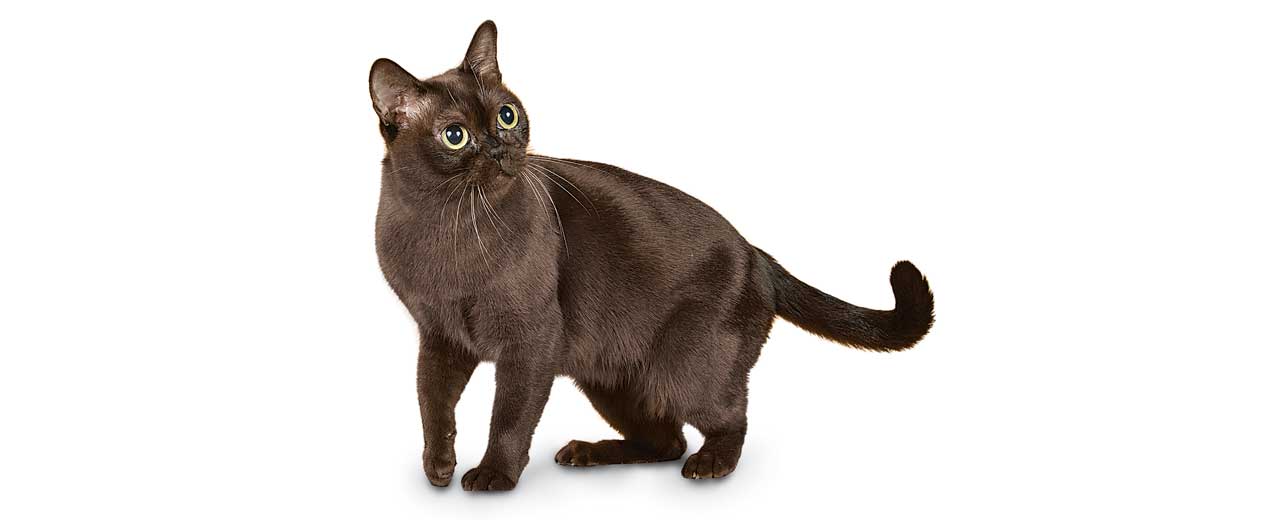
The Burmese cat is another type of cat breed popular in many families across the USA. The cat has a medium-sized body build, and even though she appears light, she feels heavy when you pick her. Her body build is also compact, but heavy boning makes her a muscular breed.
The breed first came to the USA in 1930 from Burma with DR. Joseph C. Thompson. The cat’s name was Wong Mau, and it was a deep brown colored breed that made fanciers assume it was a dark Siamese. However, Dr. Thompson disputed the dark Siamese theory. He, alongside other breeders, decided to determine the exact breed of Wong Mau. They started by breeding Wong Mau to a Siamese breed, and the resulting kittens were pure Siamese and hybrids of Siamese/hybrids.
Read more : Top 10 Ugliest Cats
They went ahead to breed the hybrids among other similar hybrids, and the result was the birth of Burmese kittens with deep, dark colors. Controversy followed after the breed’s popularity saw them appear in show halls, which led to the canceling of their recognition by the CFA because they were hybrids. It was not until 1953 that the Burmese got an official assurance and recognition from the Burmese cat society.
The breed’s facial features are all round, and by that I mean, the ear tips are rounded, the head is round, the feet are round, and so are the chin and eyes. Besides the solid look of the cat, it has extreme strength. The coat has the usual dark shadings found in many kittens with short and glossy fur, with a tortoiseshell pattern, but as it matures, the shading disappears, and in their place, the coat exhibits the richness of the accepted colors of a Burmese breed.
The Burmese cat’s coat does not require much grooming, as they are great at taking care of themselves. The accepted colors are sable, lilac, Champagne, cream, red, chocolate, tortoiseshell, platinum, fawn, cinnamon, and Champagne.
Most of the Burmese cats are sable or the traditional deep brown color. When the Burmese cat breed is younger, it exhibits a curious and active nature. However, as the cat gets older, it becomes placid and prefers to watch things from a distance rather than join in the activities.
The breed adapts to changes around her quickly, and they love sitting by the window as they observe the world around them. They do not get along too well with other cat breeds, but they are comfortable among their own types of cat breeds. They also love to play, feeling loved, which you have to do by petting and rubbing the stomach, and they are excellent climbers.
The Burmese cat breed is healthy, but they have a few hereditary issues such as feline orofacial pain syndrome, Hypokalemic polymyopathy, diabetes mellitus, unusual eating habits, head, and brain deformity. Their lifespan is between 9 and 13 years.
8. The Exotic Cat
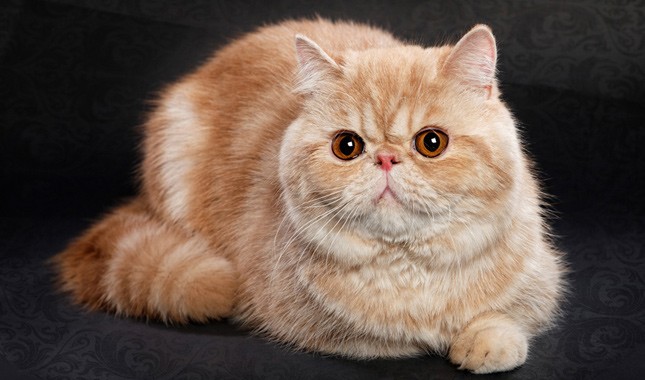
If you are looking for types of cats with great personalities and easygoing natures, you should consider adopting the Exotic cat breed.
The breed belongs to the Persian family of cats, and for several years running, it topped the list as the most popular cat breed. It is also one of the breeds with the shortest history as it goes back to the 1950s. Besides being one of the Persian shorthaired breeds, and the origin is in either America or Britain, there is not much else concerning the breed’s history. However, the popularity of the breed as a favorite pet goes back to the 1960s.
The breed likes to play, cuddle, and relax. It is gentle and calm with kids, adults, and other pets. It is also one of the most loyal and affectionate breeds among all the different types of cats globally. The two features of the breed that make it stand out are its flattened muzzle with a short and broad face, which puts it into the brachycephalic category, and its pedomorphic kitten appearance. It has wide and round eyes, small ears, a large round head, and a short nose.
The Exotic is mainly a lap cat, but on occasion, it likes to rest on spots such as tiles, cold floor, and bricks to cool off its body. The Exotic has an easy to groom, and maintain luxurious and plush coat. It is of medium length, with minimal shedding, and a range of different patterns and colors, with the most common being striped, calico, and white.
Like many other brachycephalic breeds, the Exotic cat breeds main health issue is trouble breathing. Regulating its body temperature is also a challenge, so it needs to stay in cool places when the temperatures are high.
Other genetic health issues the breed is prone to include overflowing tear ducts because of the nose’s proximity to the eyes, tooth alignment issues because of the short jawline, and occasional sinus problems. The breed has a life expectancy of 8 to 14 years.
9. Norwegian Forest Cat
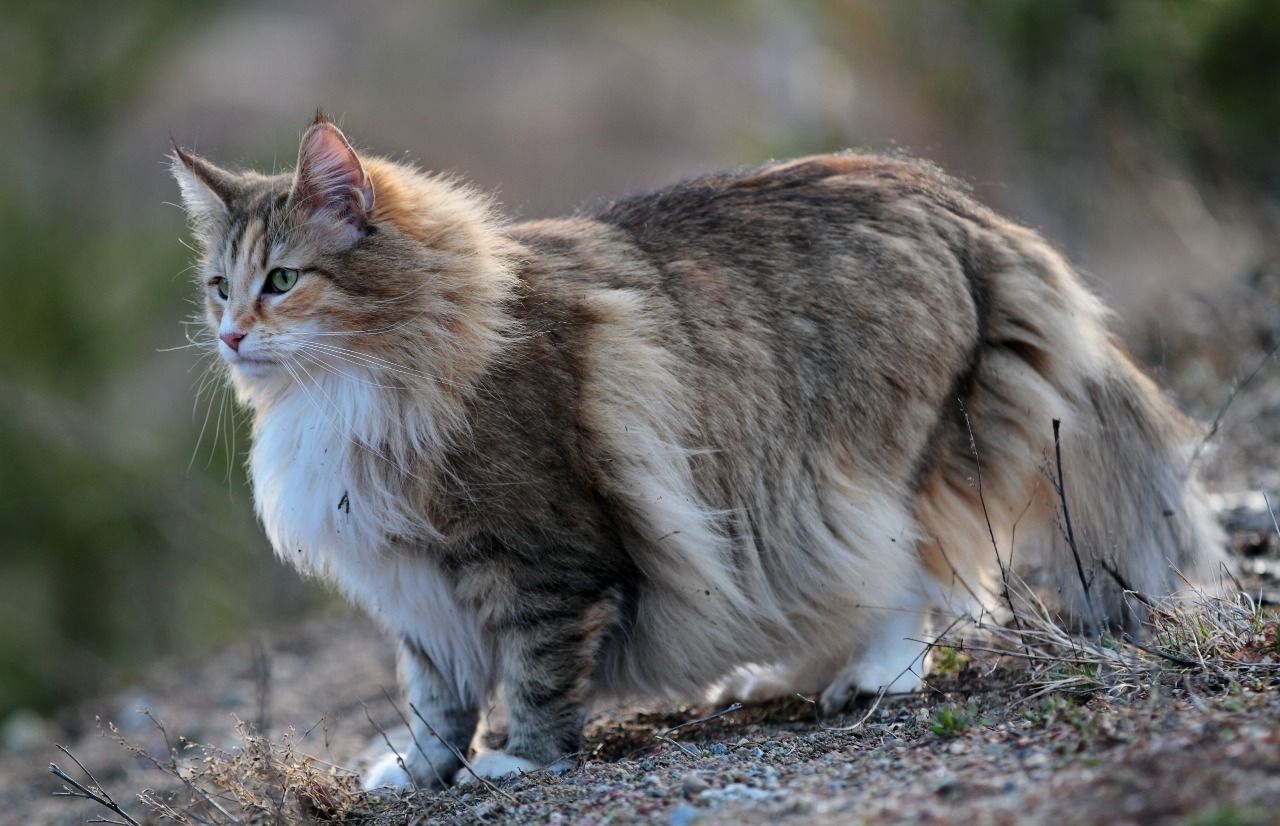
The Norwegian Forest Cat is a pleasure to look at and own because of its elegance and beautiful short coat, alongside other fantastic personality traits.
As the name suggests, the Norwegian cat breed is a native of Norway that goes back thousands of years. If you were to consider the types of cats with the most appearances in legends, fairy tales, and movies, the Norwegian cat should top the list. The cat’s origins are not very clear, but what we know is that it is a descendant of Turkey’s longhaired breed. It may also have close relations to the Russian Siberian cat or other shorthaired breeds in Arctic climates.
The breed first came to America in the late 1970s and became an instant favorite among cat lovers. The Norwegian has a large muscular body that closely resembles that of a Maine Coon. Even with the large body, the breed is calm, gentle, affectionate, and fond of everyone in the family. However, it is not too friendly with visitors or pets that do not belong to the family.
It does not crave attention, and even when alone, it will entertain itself to keep busy. The Norwegian Forest is not a lap cat, but it will sit on the edge of the seat close to family members on occasion. A pet or a scratch along the coat makes the cat feel good too. Irrespective of its large muscular build, the Wegie is an amazing climber.
A mature Norwegian weighs an average of between 13 and 22 pounds, and it has a life expectancy of 12 to 16 years. Wegies are generally some of the healthiest breeds to have as family pets. However, like many other healthy cat breeds, they have mostly generic common health issues.
Some of the most common health problems c the Norwegian Forest cat breed include Glycogen Storage Disease IV, Hypertrophic Cardiomyopathy, Polycystic Kidney Disease, and Retinal Dysplasia.
Wrapping It Up
The above are some of the most common types of cats you find in many American homes that keep pets. However, there are hundreds of more breeds with outstanding personalities and features that make people endear to them.
Cats are easy creatures to fall in love with as they are gentle, adorable, playful, and unlike dogs, they do not require too much attention or grooming sessions. Many of the breeds do perfect jobs cleaning after themselves. Which is your favorite cat breed?
Source: https://petstutorial.com
Category: Cat Breed

